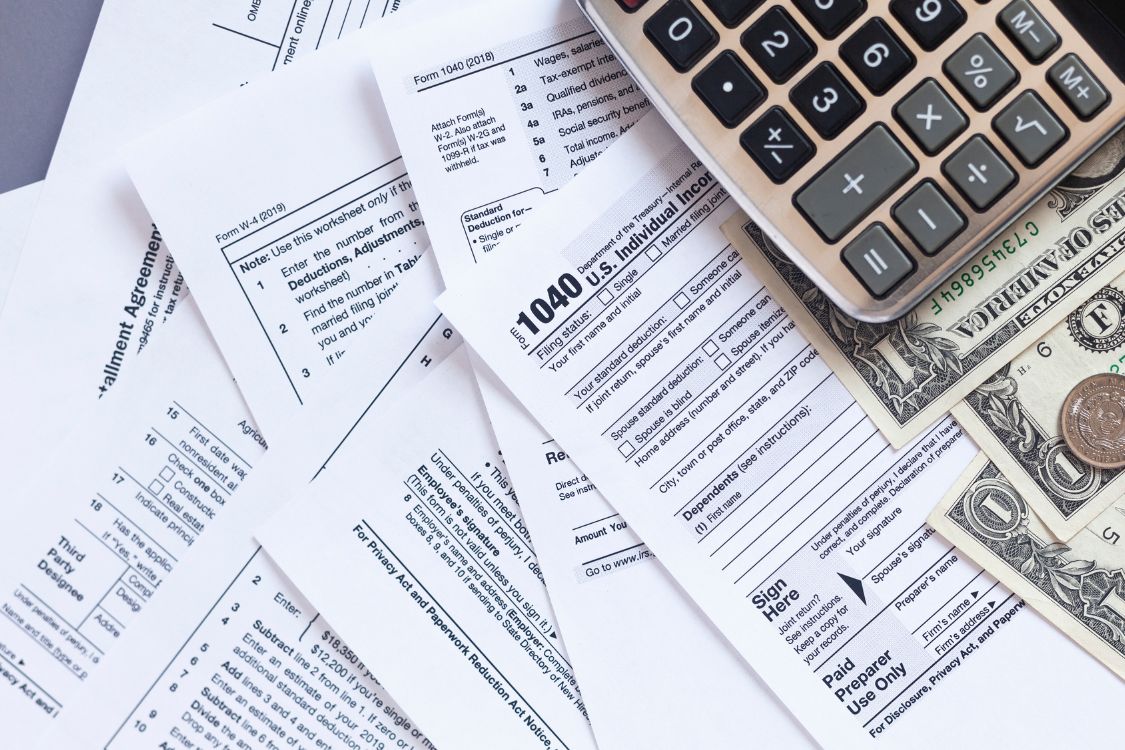Wondering how life in the United States impacts your wallet? The cost of living in America isn’t just high—it’s wildly variable. From the sky-high rents of New York City to the more modest expenses of smaller towns, understanding these financial landscapes is key. With significant differences between urban and rural expenses, being informed can save substantial funds. Dive into this piece for key insights on navigating the complex financial terrain of the U.S., helping expatriates and travelers make more informed and savvy financial decisions.
Table of Contents
ToggleUnderstanding the Cost of Living in the United States

The cost of living in the United States varies significantly depending on the region. Major urban centers such as New York City and San Francisco are notably expensive, primarily due to high housing costs. In contrast, smaller cities and rural areas typically offer more affordable living conditions. This disparity is influenced by factors like population density, demand for housing, and local economic conditions.
In major cities, the average rent for a one-bedroom apartment can be prohibitively high, often exceeding $3,000 per month. For example, New York City and San Francisco are prime examples of this trend. Conversely, in smaller cities or more rural areas, rents can be as low as $700 to $1,200 for similar accommodations. This stark difference highlights the economic divide between urban and rural America, where living expenses such as transportation and food may also vary.
| City/Region | Average Rent for a 1-Bedroom Apartment |
|---|---|
| New York City | $3,500 |
| San Francisco | $3,000 |
| Austin | $1,500 |
| Denver | $1,400 |
| Kansas City | $900 |
Location significantly impacts overall living expenses in the United States. Living in a major city often means higher costs for housing, food, and transportation, which can strain finances. Conversely, opting for a smaller city or rural area might offer financial relief, with lower costs across the board. However, these areas may have fewer job opportunities and amenities, requiring individuals to weigh the benefits and drawbacks when choosing where to live.
Analyzing Average Expenses in America
For a family of four, the typical monthly expenses in America range from $2,800 to $6,000. This broad range is influenced by variations in lifestyle, geographic location, and specific family needs. Housing remains the largest financial commitment, with average rent around $1,500 per month, depending on location. Following housing, utilities and groceries constitute significant portions of the budget. Utilities average $250 monthly, while grocery costs hover around $900. Transportation expenses vary, generally falling between $400 and $600 monthly, dependent on car ownership and commuting distances. Healthcare is another major expense, with an average annual cost of $12,000 for a family of four.
- Housing: $1,500 per month
- Utilities: $250 per month
- Groceries: $900 per month
- Transportation: $400-$600 per month
- Healthcare: $12,000 annually
Managing these expenses requires strategic budgeting and expense management strategies. Families can maintain financial stability by monitoring spending in each category and adjusting as needed. Creating a detailed budget helps track income against expenses, allowing for informed decisions about where to cut costs or allocate more funds. Implementing practices like meal planning can reduce grocery bills, while using public transportation can lower transportation costs. Effective management techniques are essential to accommodate fluctuating expenses, especially in areas with high living costs.
Housing Costs and Real Estate Trends in the US

Housing costs in the United States represent a significant portion of household expenses. In major cities like New York City and San Francisco, the average rent for a one-bedroom apartment is approximately $3,500 and $3,000 per month, respectively. These figures highlight the financial burden of living in densely populated urban areas. In contrast, smaller cities offer more affordable options, with rents often ranging from $700 to $1,200 for similar accommodations. This disparity underscores the economic divide between metropolitan and less populated areas, influencing where individuals and families choose to reside.
Recent trends in the US real estate market reveal a consistent rise in housing costs, with a reported increase of 4.7% in 2023. This escalation is driven by factors such as high demand, limited housing supply, and inflationary pressures. These trends pose challenges for potential buyers and renters, particularly in high-demand regions where competition is fierce. As costs continue to rise, individuals must carefully assess their financial capabilities and consider alternative locations that offer a balance between affordability and desired amenities. Regional differences in cost and availability necessitate strategic planning for those entering the housing market.
Navigating Healthcare Expenses in the United States
Healthcare expenses in the United States present a significant financial burden for many families and individuals. On average, a family of four can expect to spend around $12,000 annually on healthcare-related costs. For individuals, health insurance premiums alone average approximately $500 per month. These expenses include not only insurance premiums but also out-of-pocket costs such as copayments, deductibles, and other medical fees. The high cost reflects the advanced and comprehensive healthcare services available in the country, which are often considered world-class.
Understanding the importance of health insurance is critical in managing these substantial costs. Health insurance provides a financial safety net, reducing the out-of-pocket expenses that can arise from unexpected medical needs. With the average premium for individual coverage around $500 monthly, having insurance is nearly indispensable to avoid overwhelming healthcare costs. Comprehensive health insurance plans can cover a broad range of services, from routine check-ups to emergency care, making them a vital component of financial planning for healthcare needs.
To navigate healthcare expenses effectively, individuals and families should prioritize obtaining comprehensive health insurance. Exploring different insurance plans to find one that best fits medical needs and budget is essential. Cost-saving strategies include opting for high-deductible health plans paired with Health Savings Accounts (HSAs), which offer tax advantages. Additionally, staying informed about preventive care services covered at no additional cost can help manage overall expenses. By strategically selecting insurance plans and utilizing cost-saving measures, managing healthcare costs in the United States can become a more feasible task.
Exploring Education Costs in America
Education costs in America display significant variability, particularly between public and private institutions. Public universities generally offer lower tuition fees than private colleges, making them a more affordable option for many students. The cost difference is often substantial, with public universities charging in-state students significantly less than their out-of-state counterparts and private colleges. Additionally, tuition at private institutions tends to be higher due to factors such as smaller class sizes and more specialized programs. Families with children attending private schools or colleges should anticipate higher education expenses, which can add to the financial burden.
- Federal grants and scholarships
- Student loans with favorable terms
- Work-study programs
Managing education expenses requires strategic financial planning and utilization of available aid. Students and families should explore and apply for financial aid early to maximize their benefits. Planning for education costs involves evaluating various aid options and understanding the eligibility criteria for each. Establishing a budget that accounts for tuition, books, and living expenses is crucial. Additionally, seeking scholarships and grants can alleviate some of the financial pressures associated with higher education. By leveraging financial aid and maintaining a well-structured budget, education costs in the United States can be managed more effectively.
Transportation Expenses Across the US

Transportation expenses for car owners in the United States typically range from $400 to $600 per month. This includes costs such as fuel, insurance, maintenance, and potential loan payments. The average monthly payment for a new car is about $735, though this can vary significantly based on vehicle make, model, and financing terms. Owning a car is often necessary outside of city centers, where public transportation may not be readily accessible. Despite the convenience of personal vehicles, the cumulative costs can be substantial for many households.
Public Transportation Options and Costs
Public transportation in urban areas presents a cost-effective alternative to car ownership. Transit passes generally range from $100 to $150 per month, offering significant savings over the expenses associated with owning a vehicle. Public transit systems are robust in major cities, providing extensive networks of buses, trains, and subways. However, the availability and efficiency of public transit can vary greatly between regions, with some rural and suburban areas offering limited services.
When comparing the costs and convenience of driving versus public transportation, several factors come into play. While driving offers flexibility and direct routes, public transit can reduce overall expenses and environmental impact. Urban residents may find public transportation more practical due to traffic congestion and parking costs. Conversely, individuals in less populated regions might rely on cars for convenience and accessibility. Ultimately, the choice between these options depends on personal preferences, lifestyle needs, and regional infrastructure.
Cost of Food and Groceries in the United States
Food expenses in the United States are a notable component of the household budget. On average, monthly food costs total approximately $832, with $504 allocated for groceries consumed at home and $328 for dining out. For a family of four, the grocery bill can range from $800 to $1,000 each month. These expenses reflect a combination of staple items, fresh produce, and occasional dining ventures, contributing to the overall cost of living for American families.
To manage and reduce food expenses, several strategies can be employed. Meal planning is a powerful tool that helps minimize waste and utilize ingredients more efficiently. Additionally, shopping at discount stores or taking advantage of sales and coupons can further cut costs. Buying in bulk for frequently used items also offers savings over time. By implementing these cost-saving measures, households can better manage their food budgets while maintaining a balanced diet.
Understanding US Tax Rates and Financial Planning

The federal income tax rate in the United States ranges from 10% to 37%, determined by income level and filing status. Lower-income individuals face the 10% rate, while high earners encounter the top bracket of 37%. In addition to federal taxes, each state imposes its own tax rates, which can significantly affect the overall tax burden. Some states, such as Florida and Texas, have no state income tax, whereas others like California have higher rates, which can reach up to 13.3%. Sales tax rates also vary, with some states like Oregon having no sales tax, while others, including California, levy up to 7.25%, excluding local taxes.
- Utilize tax-advantaged accounts, such as IRAs and 401(k)s, to reduce taxable income.
- Plan for tax deductions and credits to lower your tax liability.
- Consider consulting a tax professional for personalized advice and strategies.
Financial planning plays a pivotal role in managing taxes and ensuring long-term financial health. By strategically utilizing tax-advantaged accounts like IRAs and 401(k)s, individuals can lower their taxable income while saving for retirement. Additionally, understanding and planning for various tax deductions and credits can significantly reduce tax liability. These steps are essential for effectively managing personal finances and minimizing the impact of taxes on disposable income.
Long-term financial stability hinges on comprehensive planning and proactive management of tax obligations. Engaging a tax professional can offer tailored advice, ensuring compliance with tax laws while optimizing financial strategies. This partnership can help navigate the complexities of tax regulations, safeguarding financial interests and enhancing overall fiscal health. Through informed planning, individuals can secure their financial future and mitigate the uncertainties associated with tax expenses.
Final Words
Navigating the cost of living in the United States involves understanding regional variances, with major cities demanding higher monthly expenses due to elevated housing costs. Typical household expenses, including housing, utilities, groceries, and healthcare, require careful budgeting to manage effectively.
Housing trends show significant cost disparities between urban centers and smaller locales, while healthcare expenses underscore the necessity of comprehensive insurance. Education and transportation contribute to monthly costs, with strategic planning essential for fiscal management.
Emphasizing proper financial planning and understanding US tax rates can lead to improved monetary management and financial stability. A keen awareness of money and costs in the United States helps individuals make informed decisions and maintain a comfortable living standard.
FAQ
U.S. Government Spending Pie Chart
Q: What does a U.S. government spending pie chart represent?
A: A U.S. government spending pie chart visually represents the distribution of government expenditures across major categories, such as defense, healthcare, and education, showing how federal funds are allocated annually.
U.S. Government Spending by Year
Q: How is U.S. government spending tracked over the years?
A: U.S. government spending is tracked through annual reports detailing expenditures for different programs and services, often represented in graphs showing trends and changes over time.
U.S. Budget Breakdown
Q: What is included in the U.S. budget breakdown?
A: The U.S. budget breakdown includes categories such as defense, healthcare, Social Security, and education, each with its respective share of the total federal budget.
How Much Does the U.S. Government Spend Per Day?
Q: How can one find out the daily spending of the U.S. government?
A: Daily U.S. government spending is calculated by dividing the annual federal budget by 365, resulting in an approximate daily expenditure figure.
U.S. Government Spending as a Percentage of GDP by Year
Q: How do you express government spending as a percentage of GDP?
A: Government spending as a percentage of GDP is calculated by dividing total government expenditures by the country’s GDP, reflecting fiscal policy impacts relative to economic size.
Where Do Tax Dollars Go Pie Chart
Q: What information does a “where do tax dollars go” pie chart provide?
A: This pie chart illustrates how tax revenues are distributed among various government programs, showing taxpayers how their contributions are utilized.
What Does the Government Spend the Most Money On?
Q: What is the largest area of government expenditure?
A: The U.S. government spends the most on mandatory programs like Social Security, Medicare, and Medicaid, which form a significant portion of the federal budget.
How Much Does the U.S. Cost?
Q: How is the cost of the U.S. government determined?
A: The cost of the U.S. government is determined by its total annual budget, including all federal expenditures on programs, defense, and public services.
What Money Is Spent in the USA?
Q: What are the main areas of financial expenditure in the USA?
A: The USA spends money on various sectors such as healthcare, defense, education, infrastructure, and welfare programs, reflecting government budget priorities.
Hazel Wall is a passionate traveler, writer, and explorer dedicated to sharing her experiences and insights with fellow adventurers. With a background in journalism and a deep love for discovering new cultures, Hazel has journeyed across continents, immersing herself in diverse landscapes and traditions.





